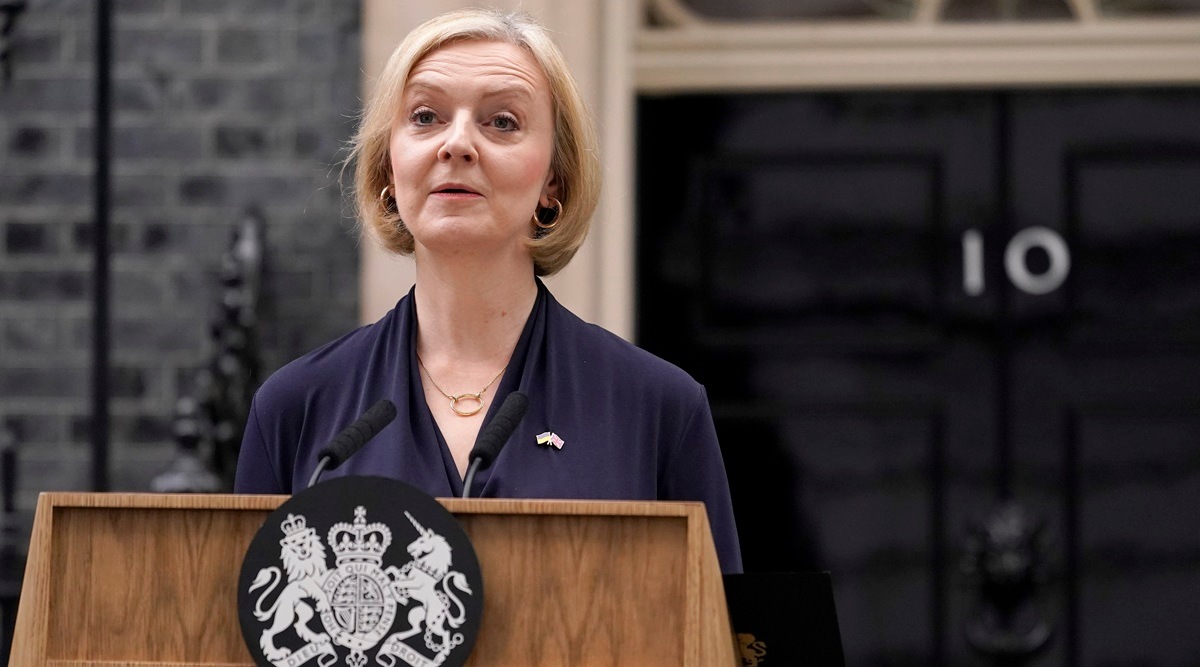 Truss chose a “dash for growth” based on tax cuts but neglected to factor in fiscal responsibility. (AP)
Truss chose a “dash for growth” based on tax cuts but neglected to factor in fiscal responsibility. (AP) An extraordinary turn of events has come to pass in Britain. Liz Truss’s resignation brought to a close a brief and chaotic premiership. It was the shortest prime ministerial tenure in British history with turmoil as its leitmotif. In less than a fortnight, the country will have its third prime minister in three months. No wonder the markets and the electorate alike are spooked. The circumstances facing the country are precarious. At a time when voters are facing a cost-of-living crisis, the next leader has an enormous battle ahead. They will need to urgently restore a sense of stability and orderly government while also outlining a vision for the future.
The unravelling of the Truss premiership had more twists than a soap opera. Within 45 days, the chancellor and home secretary resigned. Kwasi Kwarteng’s mini-budget left Britain’s reputation for fiscal prudence in tatters. A Tory party that stood for economic competence triggered dramatic volatility and skyrocketing mortgage bills for voters. Investors panicked at the spectacle of a tax cut and spending package funded by borrowing. Voters witnessed the government and the central bank operating at cross-purposes. As Truss was forced to reverse key tax cuts, the loss of authority was evident. She was in office but not in power. Resignation became inevitable.
The hope was that Truss would reunite her party after a bitter leadership contest. Her margin of victory over Rishi Sunak was narrower than anticipated, at 57 per cent to 43 per cent. She did not have a majority of Tory MPs on her side. Nor did she secure a majority among eligible Tory party members, given that nearly 18 per cent abstained. But hubristically, she did not reach out to Sunak supporters. It was only dire necessity that compelled her to appoint Jeremy Hunt and Grant Shapps as replacement chancellor and home secretary respectively.
Truss chose a “dash for growth” based on tax cuts but neglected to factor in fiscal responsibility. It was also tone-deaf to push for a cut in the top rate of income tax with winter approaching and ordinary voters feeling the squeeze. It created the impression that the party was not prioritising the greater common good. If that was not enough, then forging ahead with a 45 billion pound package of tax cuts and energy support without a clear fiscal plan was downright reckless. That blithe disregard for prudence tipped the markets over the edge.
The irony is that Truss was correct in her diagnosis that Britain suffered from low growth and needed to create greater incentives for investment. But she did not confront the hard truth that lower taxes and increased spending are incompatible. During the campaign trail she pandered to the party membership. But as she found out in office, the markets were harder to persuade. Rishi Sunak’s warnings about “fairytale economics” turned out to be prophetic. By seemingly prioritising growth over stability, Truss ended up with neither.
What lies ahead then after this sorry mess? There will be yet another leadership contest among the Tories which is expected to conclude by the end of next week. The hope is that Tory MPs could choose the leader without going to the party membership. That can only happen if only one candidate is left standing before the process concludes with others choosing to “withdraw”. The early signs are that Sunak is a front-runner with Penny Mordaunt also expected to be a credible contender. Support is also growing for Ben Wallace, the defence secretary as a unity candidate and there are also some pushing for a Boris Johnson comeback.
The economic circumstances remain dire. The conflict in Ukraine has pushed energy prices up by more than 50 per cent with fuel poverty a real concern. Inflation is expected to touch 10 per cent this year, its highest level in 30 years. As the Tories implode, Labour has leapfrogged substantially ahead in opinion polls. Keir Starmer is expected to continue to push for an early general election and stands to benefit from a mood of anti-incumbency. His challenge remains to keep the trade unions aligned with his centrist leanings.
Turning to the Tories, what should the next PM look for in a reset? First, restoring stability would be key. Second, combating inflationary headwinds by focusing on fiscal responsibility would be vital. Investment in infrastructure and in education should be prioritised. Core to a long-term agenda would also be a competitive tax regime to boost entrepreneurship and a fit-for-purpose approach to immigration. Alliances with like-minded democracies such as India will need to be cemented too. Rebuilding relationships with European allies should also be factored in.
None of this will be easy. The next PM will need to stitch together a broad Tory coalition from different factions to succeed. The real lesson from the past few weeks is that voters and the markets have signalled that stability is a necessary precondition for growth. It remains to be seen if the Tory party and its members are prepared to grasp this truth.
The writer is a London-based lawyer and political commentator